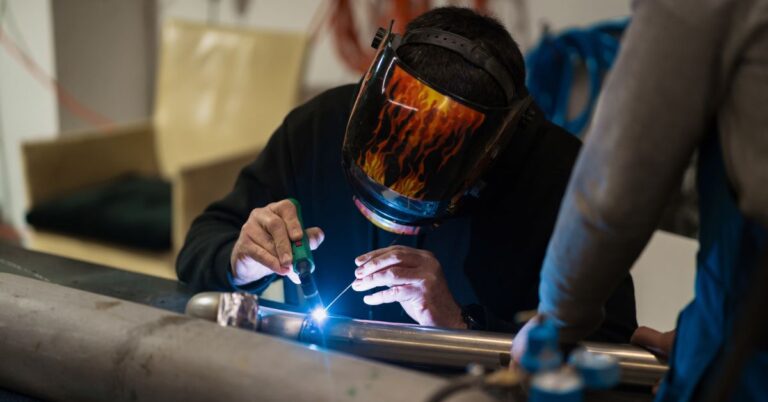The Art and Utility of the Tortellinatrice in Modern Italian Cuisine

The world of pasta making is an intricate ballet of tradition, creativity, and precise craftsmanship. While handmade pasta remains a revered culinary art, modern technology has introduced tools designed to streamline and perfect this time-honored process. One such marvel is the tortellinatrice, a specialized machine dedicated to crafting tortellini, the small, ring-shaped pasta famously associated with the Emilia-Romagna region of Italy.
The tortellinatrice is no ordinary piece of kitchen equipment. Rather, it symbolizes a harmonious blend of traditional Italian culinary techniques and contemporary efficiency. This article explores the fascinating history, uses, and benefits of the tortellinatrice, shedding light on why it has become a vital tool in professional and home kitchens alike.
The Origins of Tortellini and the Birth of the Tortellinatrice
To understand the importance of the tortellinatrice, one must first appreciate the origins of tortellini itself. Legend has it that the shape of tortellini was inspired by Venus, the Roman goddess of love. According to folklore, a chef was so enraptured by her beauty that he created pasta mimicking the shape of her navel. While this origin story may be steeped in myth, it captures the romanticism surrounding tortellini.
Traditionally, tortellini is made by hand with a painstaking process that involves rolling out thin sheets of dough, cutting them into squares, adding the filling, and folding each piece of pasta into its signature shape. Despite the labor-intensive nature of this process, it remains essential in preserving the dish’s delicate texture and authentic taste.
The invention of the tortellinatrice represented a turning point in the production of tortellini. With Italy’s post-World War II industrial boom and the rise in demand for mass-produced foods, artisans sought ways to maintain the quality of their creations while scaling up production. The tortellinatrice emerged as a solution, allowing pasta makers to produce these intricate morsels more efficiently while retaining their traditional charm.
You May Like : Work in Nuzillspex Advisors Ltd
How Does the Tortellinatrice Work?
At its core, a tortellinatrice is designed to mimic the meticulous work of skilled hands. The machine combines mechanical precision with culinary finesse, enabling chefs to create perfectly formed tortellini in a fraction of the time it would take manually. While various models and designs exist, the fundamental operation remains largely consistent.
The process starts by feeding pasta dough sheets and pre-prepared filling into the machine. The tortellinatrice then cuts the dough into precise shapes, portions the filling perfectly, and folds each piece into the iconic tortellini form. Advanced models even replicate the delicate twist required to achieve the pasta’s distinctive ring shape. Some machines also allow for adjustments to accommodate different sizes of tortellini or variations in fillings, making them highly versatile.
Despite their mechanical nature, the results produced by a tortellinatrice are astonishingly uniform, ensuring a consistent look and quality in every batch. This precision is particularly valuable for restaurants and food manufacturing facilities, where appearance and quality control are paramount.
Why the Tortellinatrice is a Game-Changer
For chefs and pasta lovers alike, the tortellinatrice offers a host of benefits that make it an indispensable tool in modern kitchens. Above all, the machine streamlines production without sacrificing quality. Handmade tortellini, though cherished for its artisanal charm, requires significant time and effort. The tortellinatrice makes it possible to create this intricate pasta at scale, whether it’s for a bustling restaurant or a specialty pasta brand.
The machine’s efficiency is only one aspect of its appeal. By automating the repetitive and time-consuming aspects of tortellini making, the tortellinatrice frees up chefs to focus on other elements of their craft. From experimenting with creative fillings to perfecting complementary sauces, chefs can allocate more energy toward innovation and presentation.
For home cooks, the tortellinatrice has become a valuable addition to well-equipped kitchens. As the interest in homemade and traditional foods continues to grow, many culinary enthusiasts seek tools that enable them to recreate authentic recipes with greater ease. A tortellinatrice, while often considered a professional-grade appliance, has increasingly made its way into domestic kitchens, empowering home cooks to produce restaurant-quality tortellini.
The Tortellinatrice and Culinary Creativity
One of the most exciting aspects of the tortellinatrice is the platform it provides for culinary creativity. While its primary purpose is to create tortellini, the machine also allows for experimentation with different fillings, doughs, and flavor combinations. Traditional tortellini is typically filled with a mixture of meats, cheese, and spices. However, modern chefs have reimagined this pasta with everything from vegetarian fillings like ricotta and spinach to decadent variations featuring truffle or lobster.

The tortellinatrice also makes it feasible for chefs to experiment with colored doughs. By incorporating natural ingredients like squid ink, beetroot, or spinach into the dough, chefs can create visually striking tortellini that retain their traditional essence while offering a contemporary twist. This fusion of old and new is a testament to the machine’s versatility and its role in advancing culinary arts.
Preservation of Tradition Through Innovation
One might wonder if the tortellinatrice dilutes the artisanal nature of Italian pasta making. On the contrary, the machine serves to preserve tradition in a rapidly evolving world. While it introduces automation, it adheres to the traditional techniques that define tortellini. By enabling consistent production, the tortellinatrice ensures that this beloved pasta remains accessible to wider audiences without compromising its authenticity.
Italian cuisine places immense value on quality ingredients and time-tested methods. The tortellinatrice respects this ethos by replicating the intricate work of skilled hands. Far from replacing tradition, it ensures that this culinary heritage can be passed down to future generations, even in the face of growing demand and modern constraints.
The Tortellinatrice in the Global Culinary Landscape
The rise of the tortellinatrice signifies not only a shift in Italian pasta-making but also its global relevance. Tortellini is now enjoyed far beyond Italy’s borders, with countless interpretations found in cuisines around the world. From American-style cheese-filled tortellini to inventive fusion dishes, this humble pasta holds universal appeal.
The versatility of it has contributed to its international popularity. Machines are now tailored to suit the needs of different cultures, enabling chefs worldwide to adapt tortellini to local tastes. For instance, Asian-fusion chefs might use the machine to craft tortellini filled with ingredients like pork, ginger, or lemongrass, creating a delightful marriage of Italian and Eastern traditions.
Additionally, the machine’s reliability makes it a favorite among gourmet food manufacturers. The ability to produce consistent, high-quality pasta at scale means that the tortellinatrice is a driving force behind the accessibility of tortellini in supermarkets and specialty food stores globally.
Investing in a Tortellinatrice
For professional kitchens and serious home cooks, investing in a tortellinatrice is a decision that pays dividends. Though the initial cost can be significant, the machine’s durability and efficiency often justify the expense. By reducing labor and waste, the tortellinatrice proves to be both economical and practical in the long run.
When purchasing a tortellinatrice, it’s important to consider factors such as size, capacity, and functionality. Smaller models cater well to home kitchens, while larger industrial machines are suited to commercial enterprises. Many respected manufacturers offer a range of options to meet diverse needs, ensuring that anyone interested in elevating their pasta-making game can find the right fit.
A Future Rooted in Tradition
The tortellinatrice serves as a bridge between time-honored culinary traditions and modern innovation. While it simplifies the production process, it never strays from the essence of what makes tortellini special. Whether in an artisan’s workshop or a home kitchen, this remarkable machine has cemented its place as a testament to the enduring appeal of Italian cuisine.
By preserving tradition, promoting creativity, and enhancing efficiency, the tortellinatrice ensures that the love for tortellini remains as vibrant today as it has for centuries. From its humble beginnings to its global presence, this remarkable tool continues to shape the story of pasta, one perfect ring at a time.
Read More : Exploring the Fascinating World of Gel Ooru






